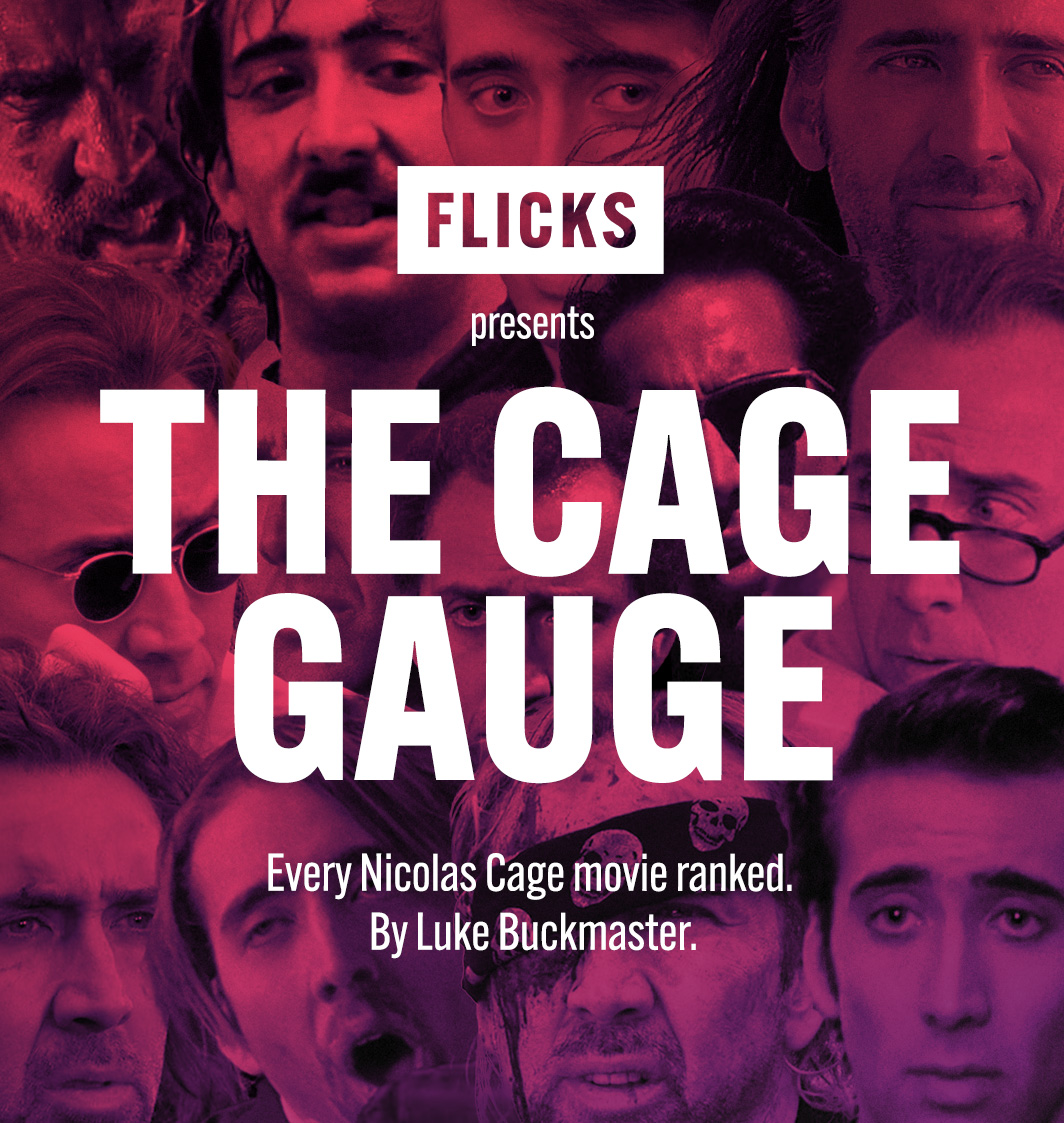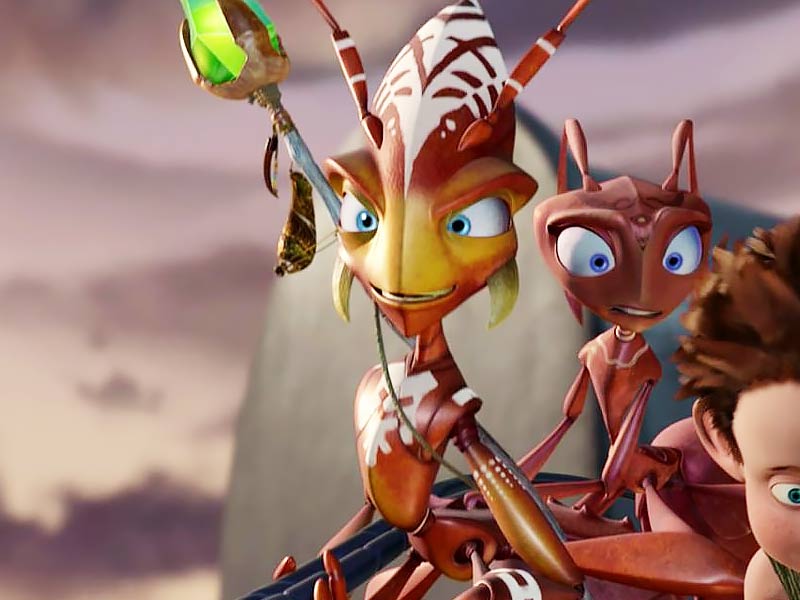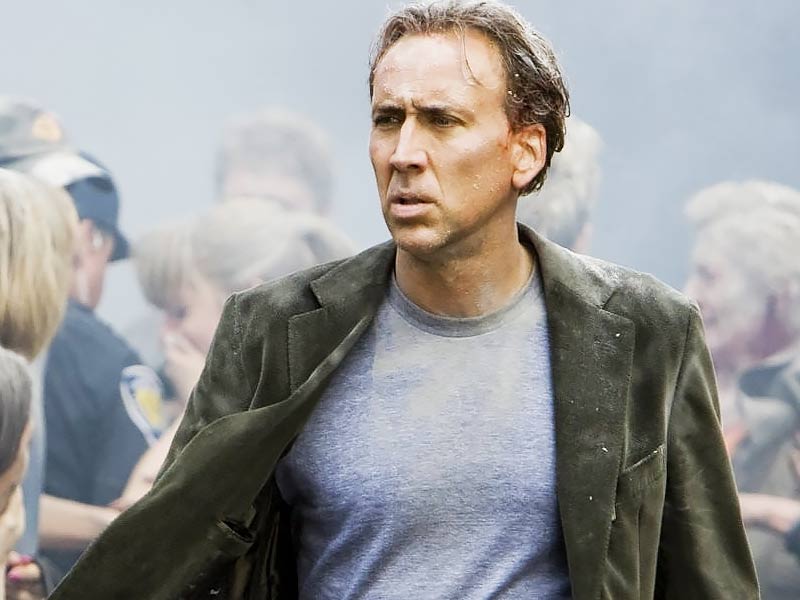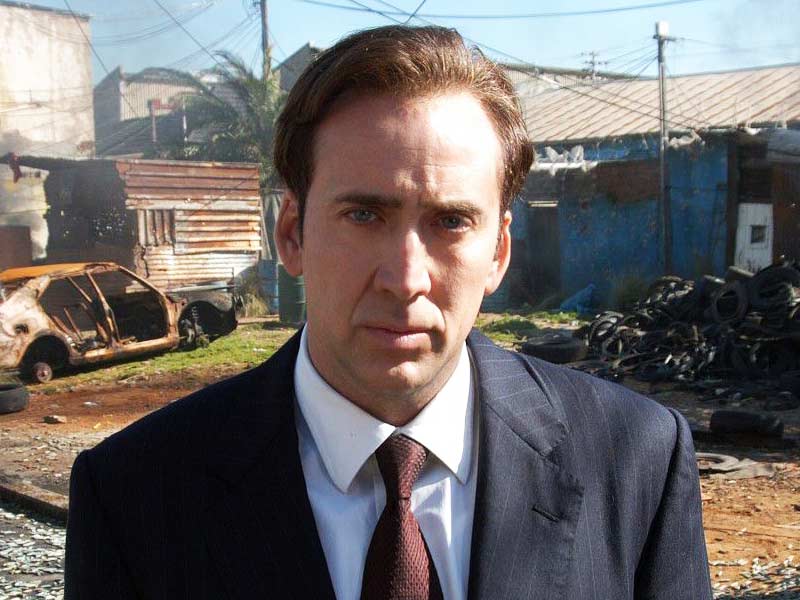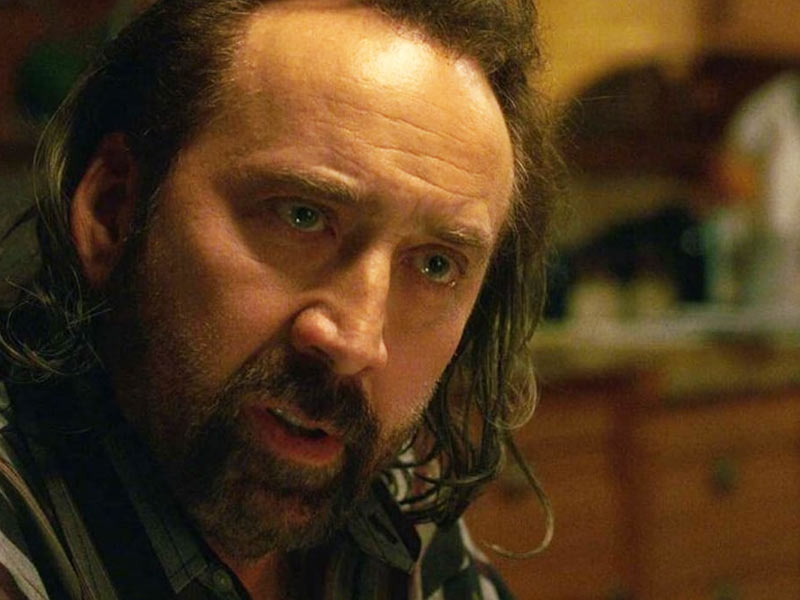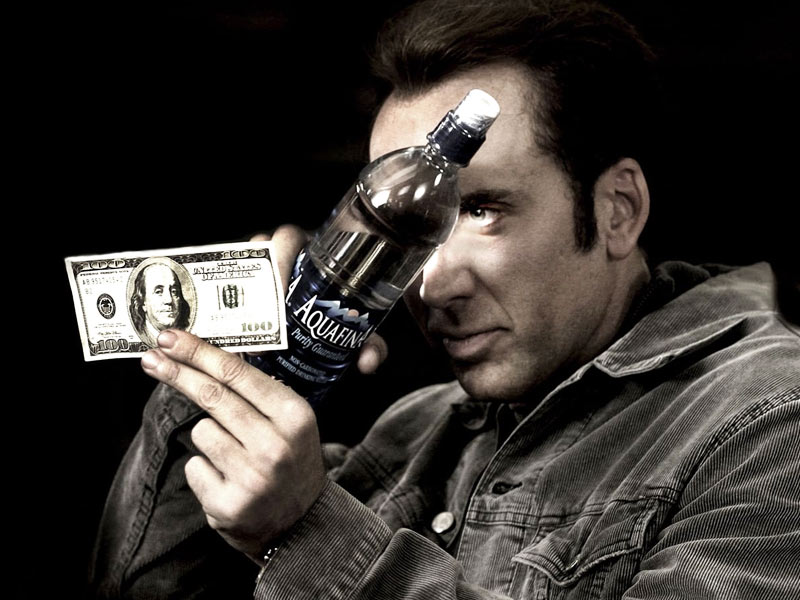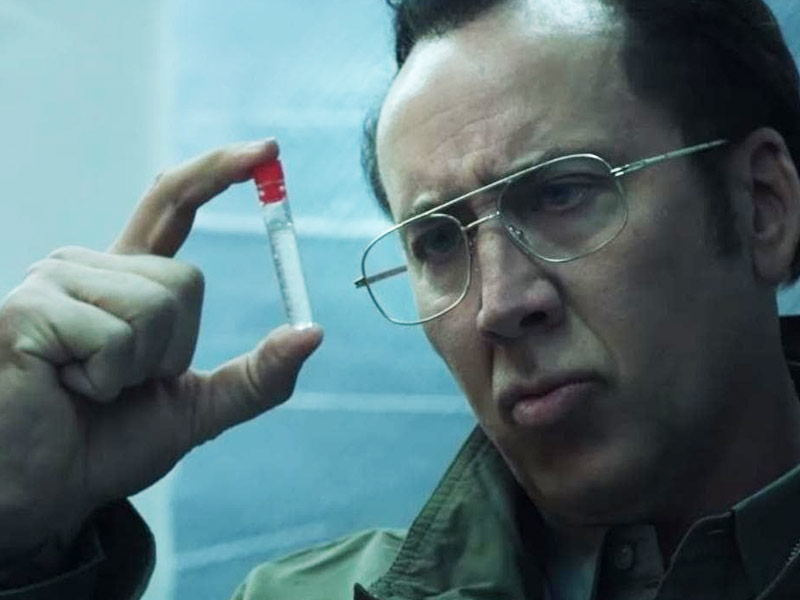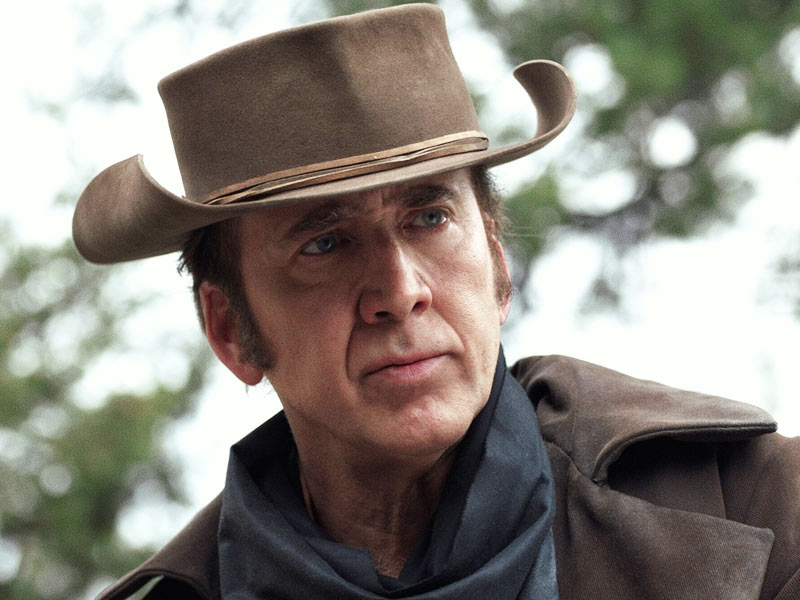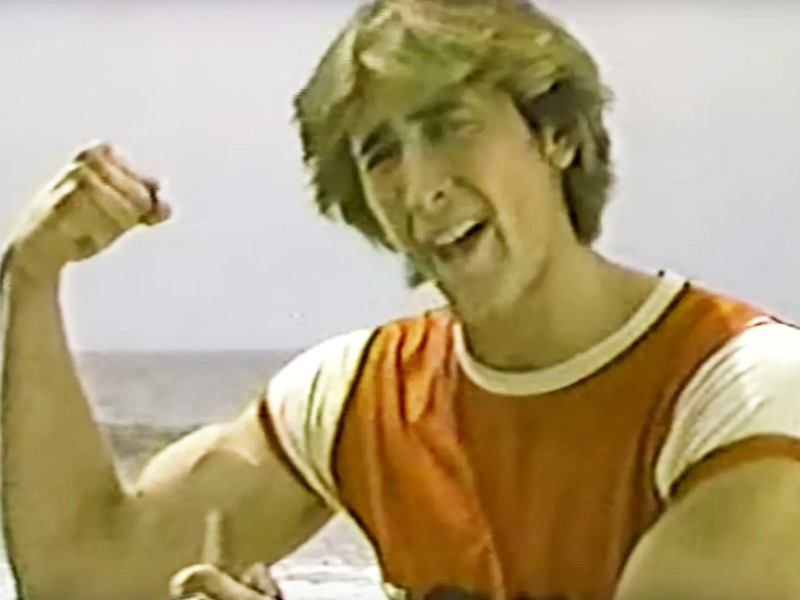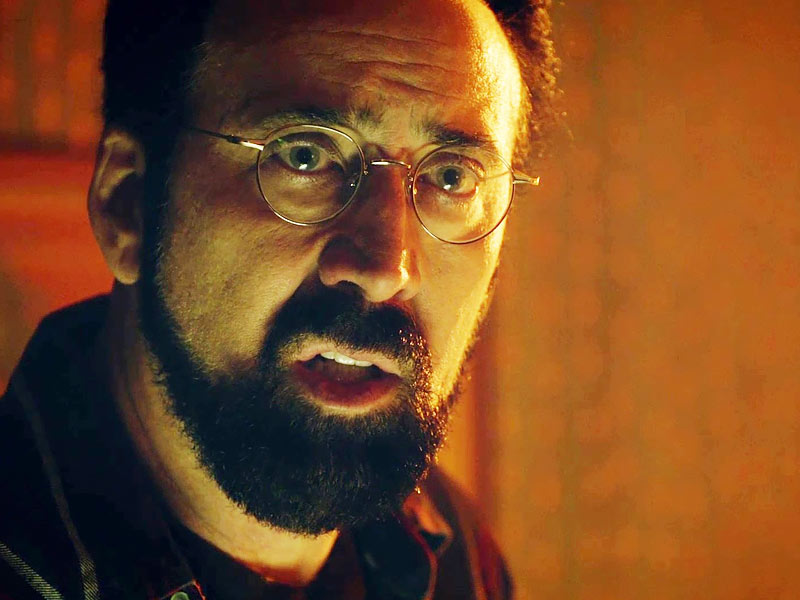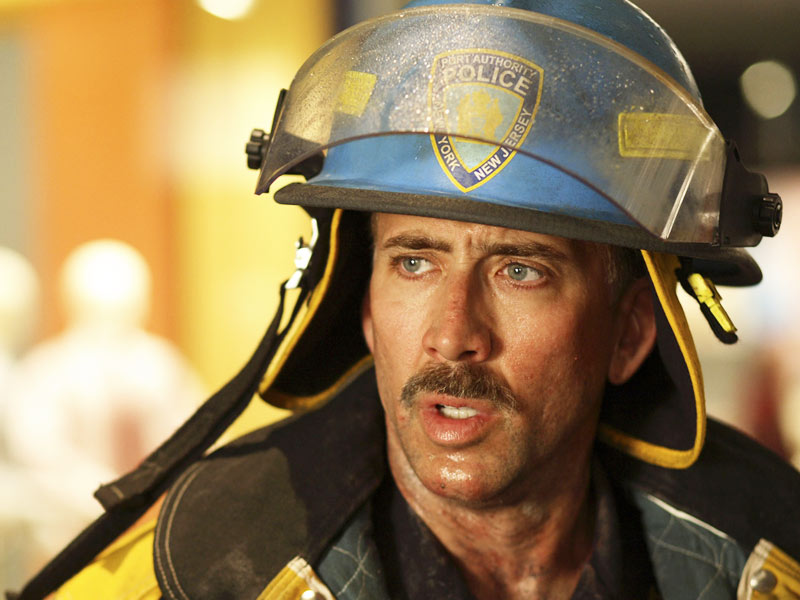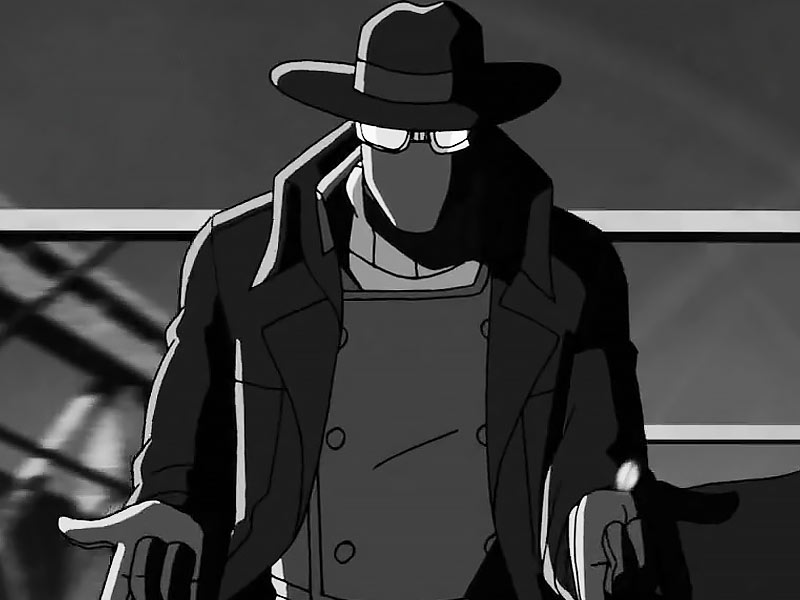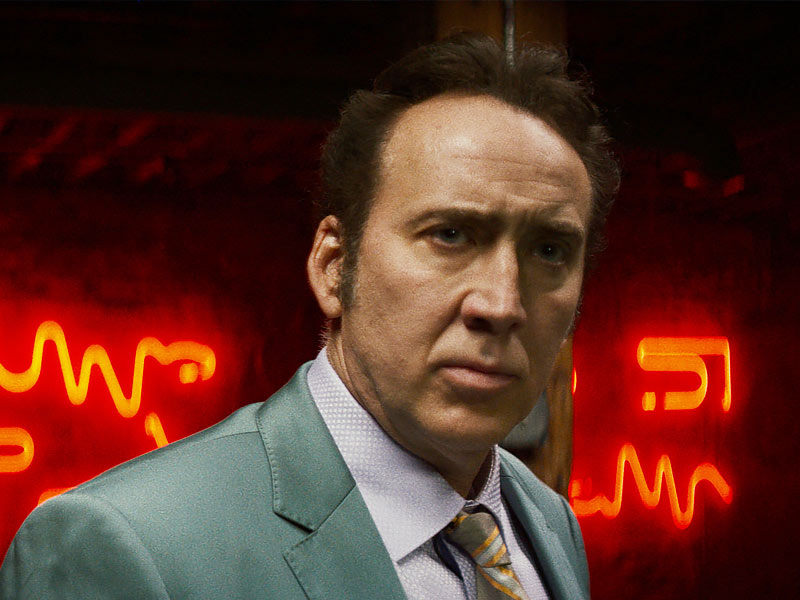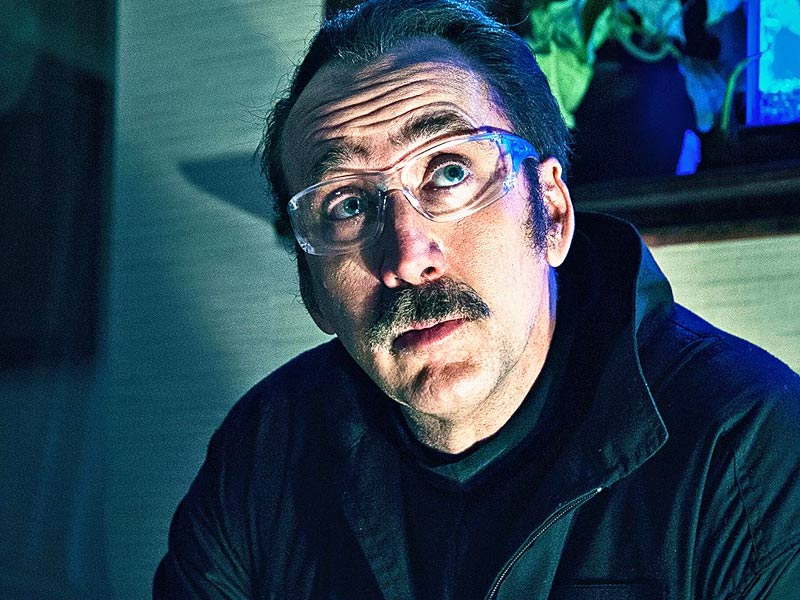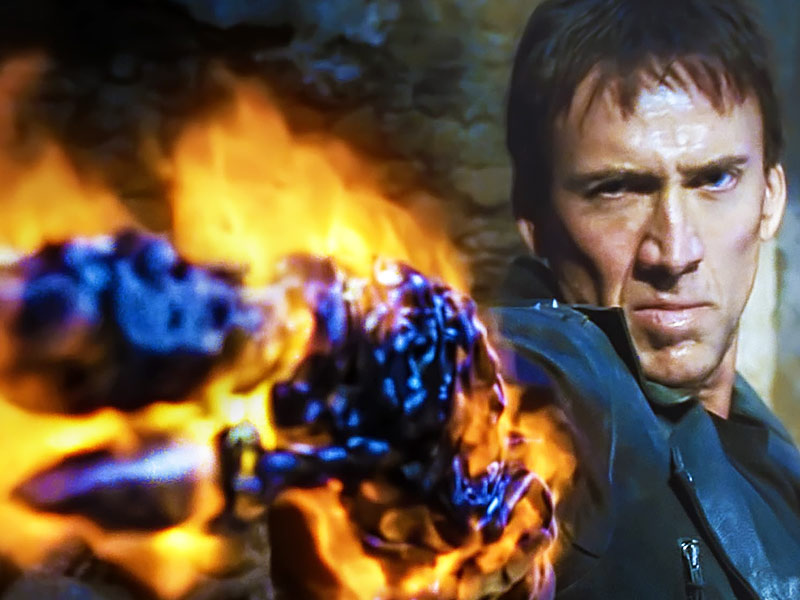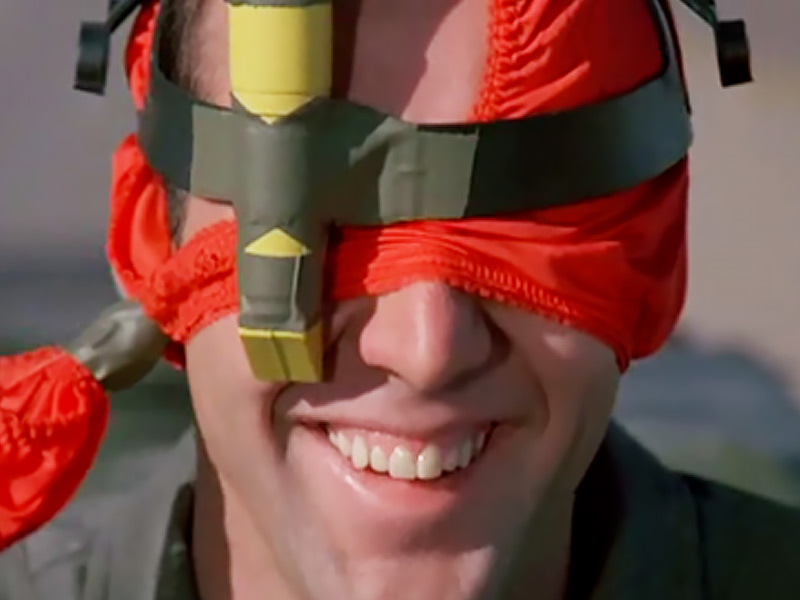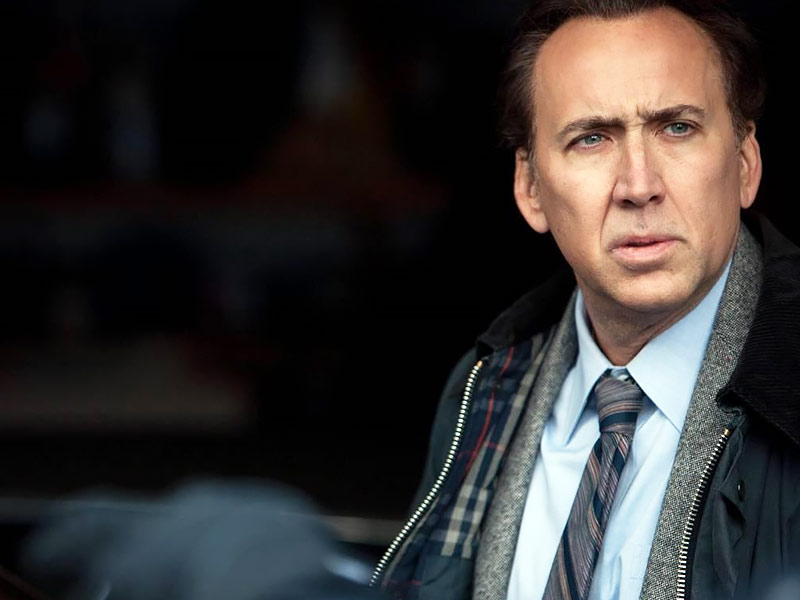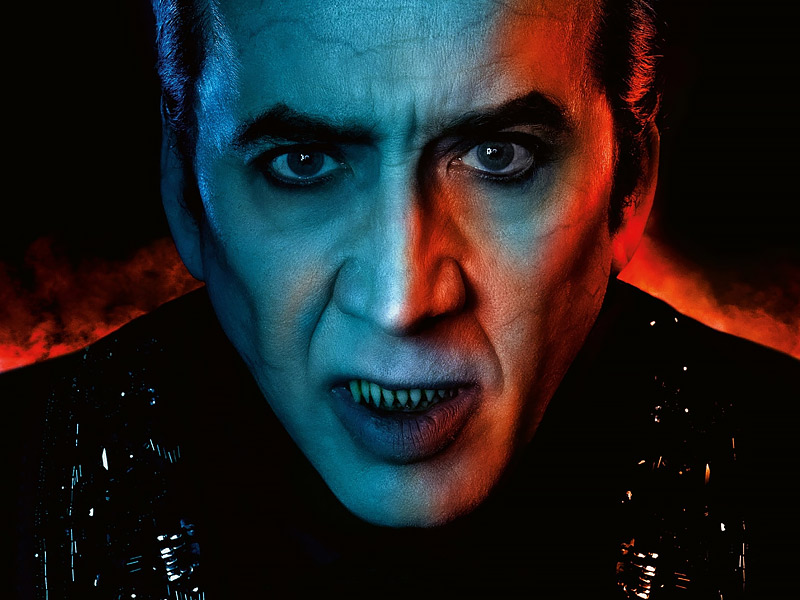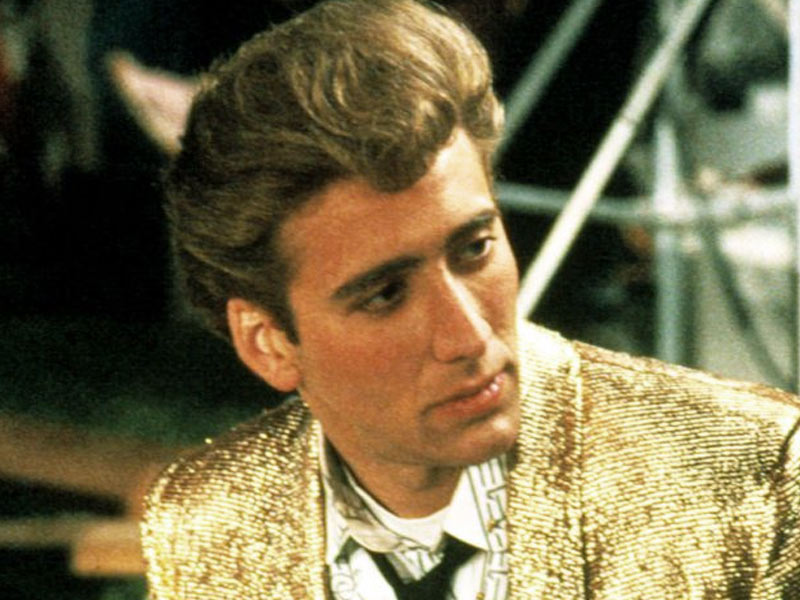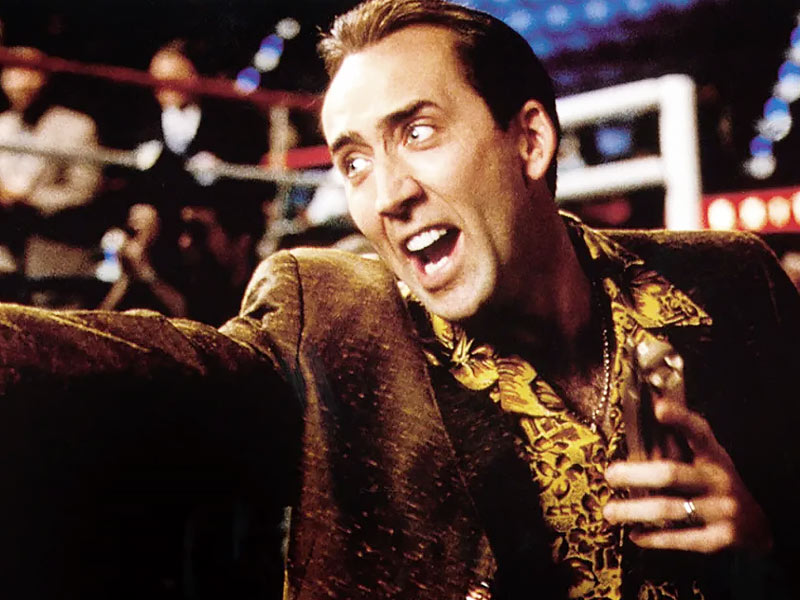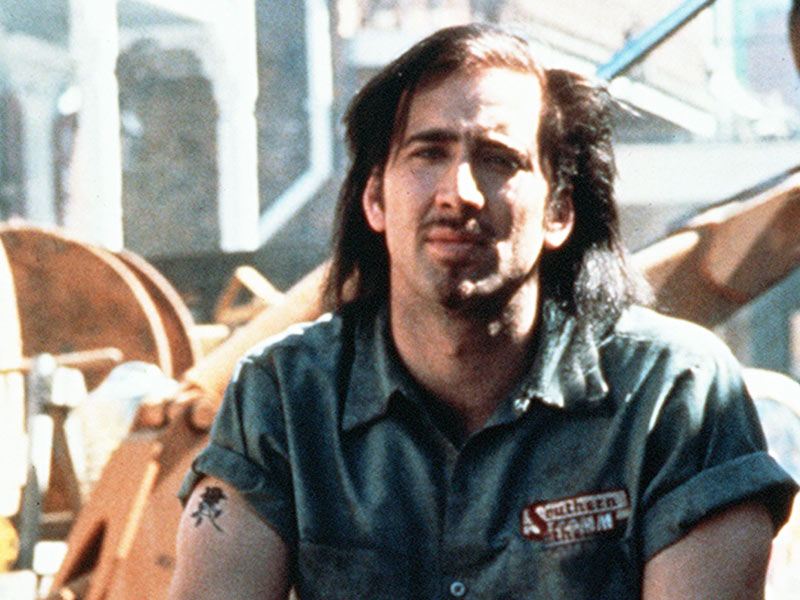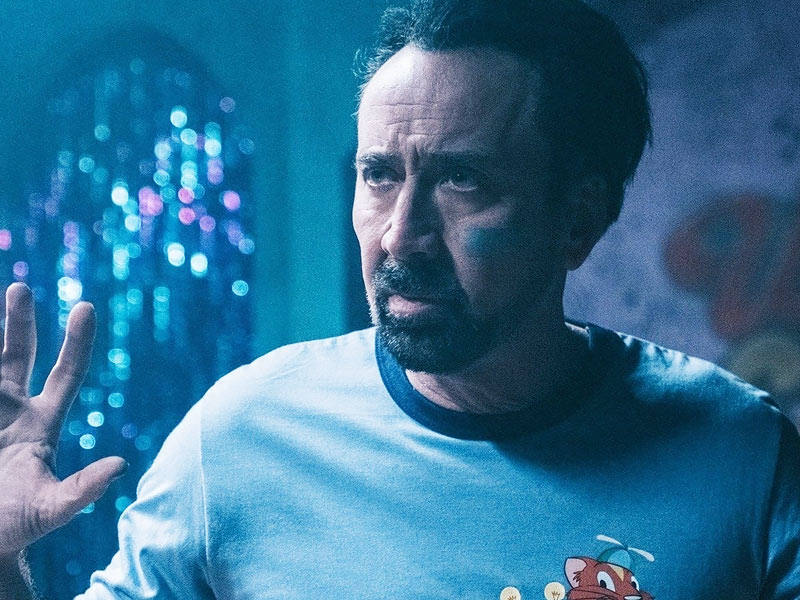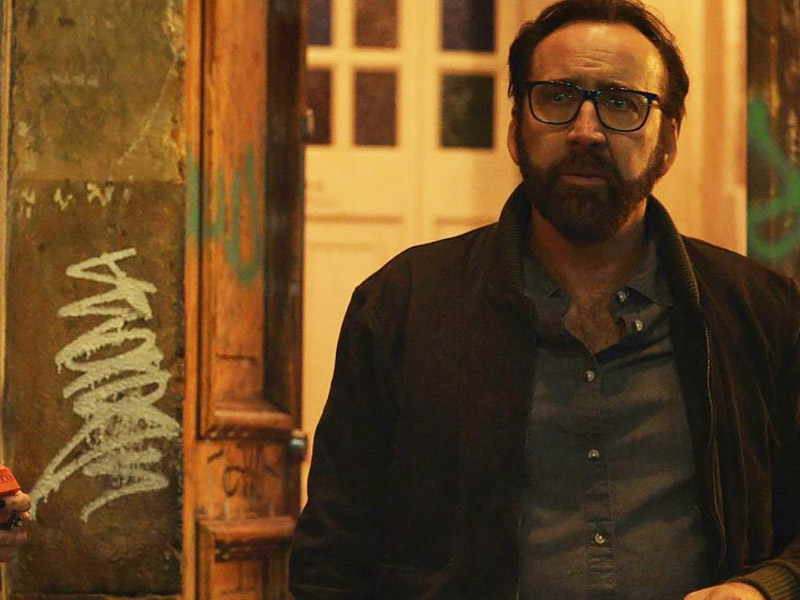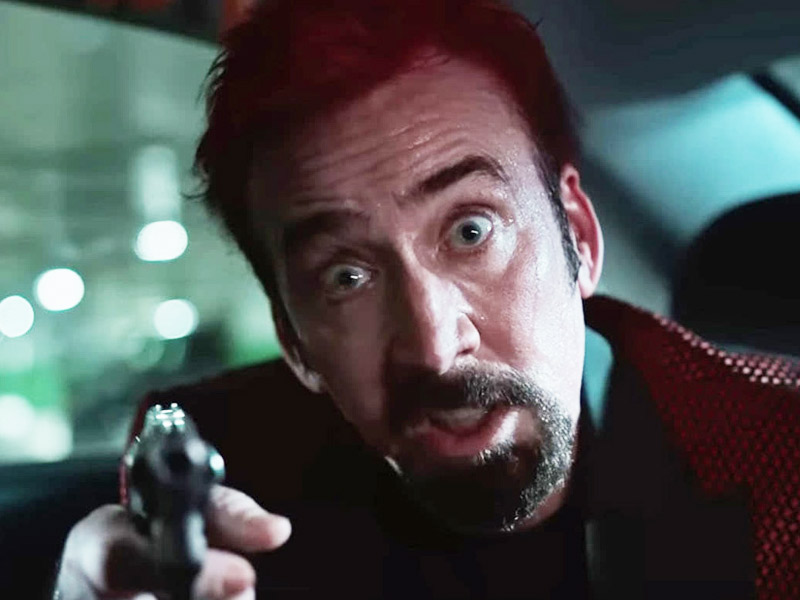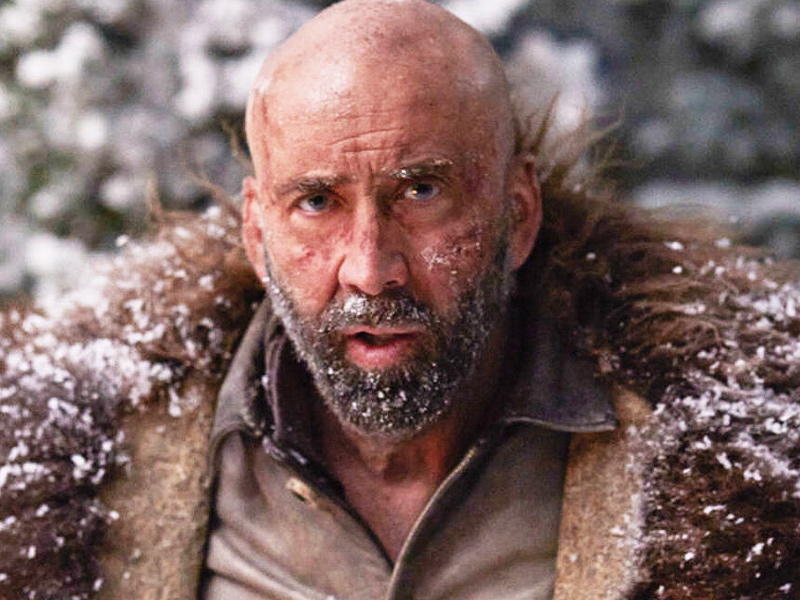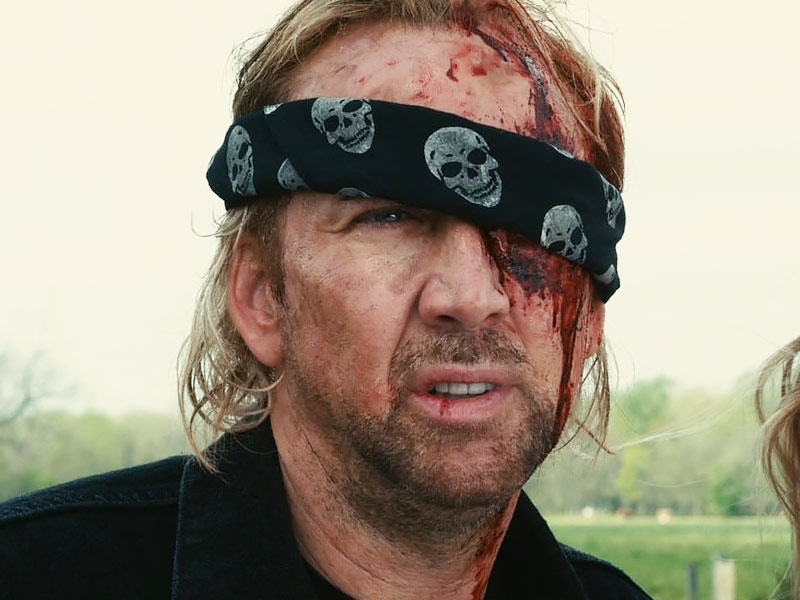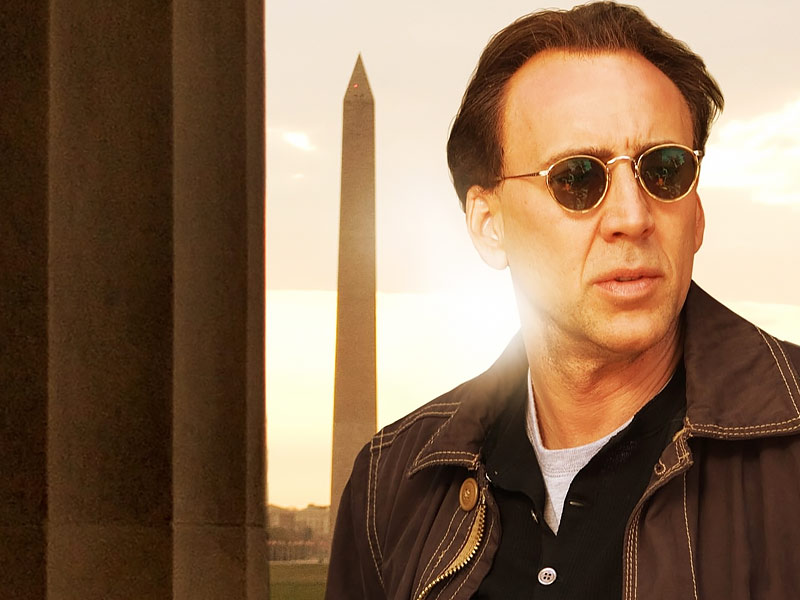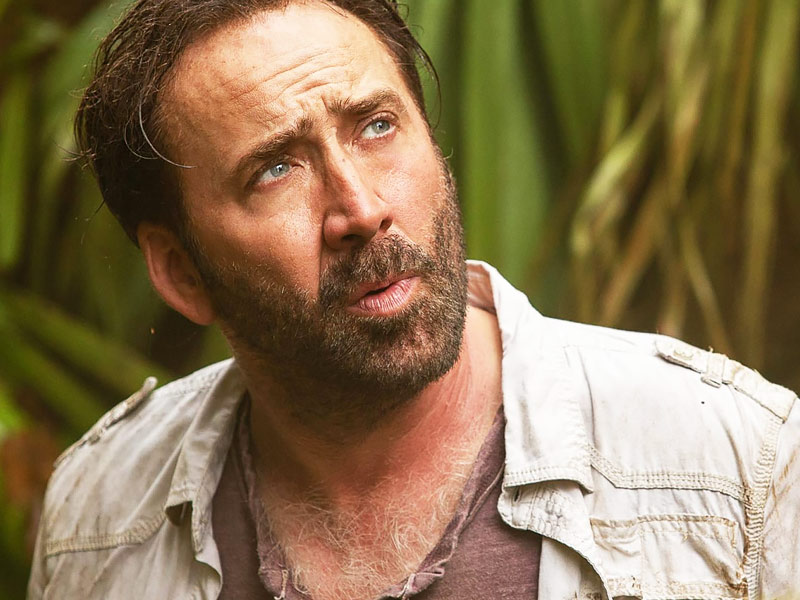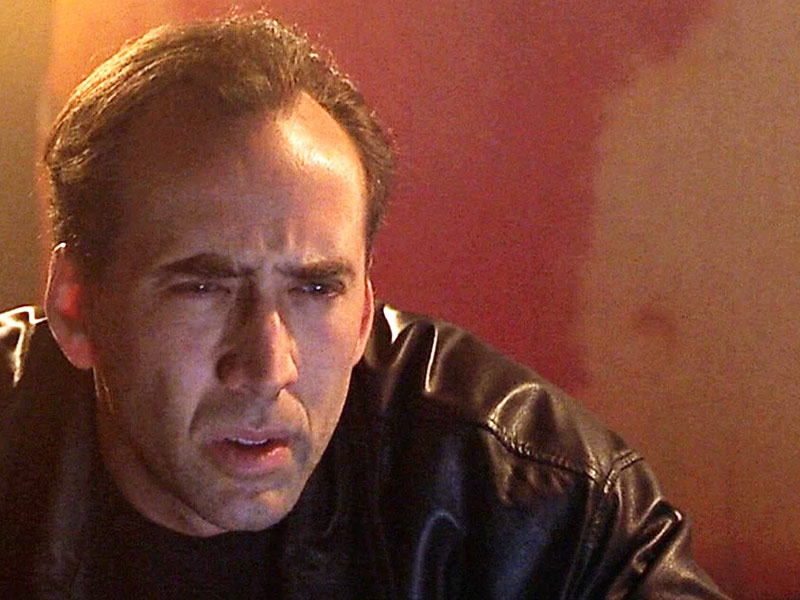Celebrating one of cinema's most original and distinctive actors, the core philosophy underlying The Cage Gauge is that every Nicolas Cage movie is worth watching—because every Nicolas Cage movie has Nicolas Cage in it. Updated upon the release of every new Nic Cage movie (the most recent addition being Dream Scenario), this list uses a unique rating system embracing the actor's beloved qualities. To learn more about The Cage Gauge, visit the about page. This project was created (and all words written by) Luke Buckmaster, who can be followed on Twitter here.
Snowden (2016)

When Cage’s professor and computer expert Hank Forrester asks the famous whistleblower what his sin is, Snowden (Joseph Gordon-Levitt) responds “computers.” Forrest returns: “you’ve come to the right whore house"—establishing a mentor type character who doesn’t mince words. It’s clear early on that Cage will have a peripheral role in this narrative, which follows the protagonist as he gets a job in the intelligence community and, disillusioned, blows the lid on some very alarming government secrets.
Forrest is the jaded guy who’s seen it all before but intends to pass on his wisdom; he wants an audience. Handed some fun lines (for instance “sometimes the more you look, the less you see”) Cage delivers a very good albeit familiar kind of performance. Director Oliver Stone used to make big, bold, hotheaded political statements, but here the fire is gone. More importantly for The Cage Gauge, after just a couple of scenes, Cage is gone too, returning only very briefly towards the end.
The Ant Bully (2006)

Wielding a staff and looking all wizard-like, Cage’s ant Zoc is indeed a wizard, introduced as somebody (someant?) determined to find an ingredient for a special potion. In this vocal performance his inflection has a lively seesaw quality, going up and down in cadence, his sentences like small songs. Zoc looks at the titular bully early on and cries “away monster!” before he cooks up a potion that reduces said bully to ant size, in order for the colony to enact revenge on a kid who has long tormented them.
This is a very strange movie. I didn't feel a connection to anyone (anyant?) in it, least of all the titular twerp. The central message—about the importance of learning to be empathetic—is expressed forcefully, giving the film a moralistic—almost pious—aura. There are some visually compelling flourishes and a slapstick gag or two that connects. Cage boosts the experience, doing the most he can with a limited role.
Knowing (2009)

We meet Cage’s John Koestler in the yard, glass of red in hand, alternating between looking through a telescope and operating a barbeque. He’s a single father to a young son, who he addresses with a tender and slightly patronising voice. He’s also the cool science professor, expressing his view that “shit just happens” before finding himself at the centre of a kooky story involving the predetermined trajectory of space and time, after discovering a sequence of numbers that predict the world’s greatest disasters.
Cage’s performance has two modes: the careful, learned intellectual and father and the "MY GOD WE’RE ALL GOING TO DIE!"" soothsayer. That juxtaposition provides a couple of points for originality. Choice moments from Alex Proyas’ goofy film—which has notes of Final Destination—tend to involve the big set pieces, such as a train crash the protagonist sees coming (“move back, move back!”) but cannot prevent.
Windtalkers (2002)

In a gruesome WWII battle, Cage's mud-spattered Sergeant Joe Enders navigates the expected occupational hazards—firing off rounds and trying to avoid explosions. When he loses a colleague he cries "no, no, NNNNOOOOOO!" before the film cuts to an American flag—though it’s not quite as gung-ho patriotic as that implies. With part of his left ear blown off, thus literally and mentally scarred by the war, Cage’s mode is "haunted" but not in an overly melodramatic way.
And certainly not in a way that implies mental defeat—in fact Enders returns to duty, protecting Adam Beach's "windtalker," who is trained to communicate in coded messages crucial for sharing battle directives. The relationship between them furthers director John Woo's affection for stories about friendships forged in violent circumstances. The battlefield scenes are well directed, contrasting exotic beauty of the settings with atrocities of war. Cage's performance gets meatier as the story progresses.
Lord of War (2005)

Cage's arms dealer Yuri Orlov is the amoral professional who doesn't care if the world burns—he just wants to make money from the bonfire. At one point the smooth-talking Orlov favourably compares his products to cigarettes, boasting "at least mine have a safety switch.” In extensive memoir-like narration the protagonist reflects on how he got involved in the gun trade, describing himself as an "equal opportunity merchant of death" who never sold munitions to Osama bin Laden because "back then he was always bouncing cheques.”
Painting Orlov as an eccentric would have been a mistake; the point is that he’s like any suited-up corporate shark selling their soul to extreme capitalism. Writer/director Andrew Niccol doesn't tell a redemption story; rather a misanthropic drama that reminded me, beat-wise, of a rise-and-fall gangster movie. Cage has a solidifying central performance, not intended to be flashy or eccentric.
Grand Isle (2019)

Cage’s bleary-eyed ex-marine Walter is the kind of rough redneck one wishes only to observe from a safe distance. “You sure as hell picked the wrong house,” he says in his intro scene to an intruder who did, indeed, sure as hell pick the wrong house. As does handyman Buddy (Luke Benward), who is thrust into a tense dynamic between Walter and his come-hither wife (KaDee Strickland) after he's forced to remain in their large Victorian house when a hurricane rages outside.
With a beer belly, stubble, unkempt hair and a tendency to shoot things, drink things and smoke things, Cage provides gravitas in a chamber piece that lacks intensity. The film stymies itself with a police interview room framing structure that repeatedly takes us out of the moment, reducing an already flailing pace. Our man's Southern accent is thoroughly convincing and occasionally he's handed meaty dialogue—such as a monologue 42 minutes in about how his entire squad got killed in Vietnam, and “I shoulda been there with them, I shoulda died with them.”
National Treasure (2004)

Cage’s Benjamin Gates is “the crazy person who was right all along”—as well as a cucumber cool intellectual who thinks calmly and logically no matter how ridiculous the situation. The audience is totally behind this treasure-seeking conspiracy theorist (back in the days when conspiracy theorists were considered harmless) when he decides the only reasonable course of action is to steal the Declaration of Independence. This is one of several far-out objectives necessary in order to locate precious treasure before Sean Bean gets his mitts on it.
Cage often speaks with a raised eyebrow, implying “I am a man who knows things.” This mostly restrained performance has a whiff of Stanley Goodspeed from The Rock (which ranks much higher on The Cage Gauge) in that both characters have more brain than brawn, but an inability to escalate physically. Jon Turteltaub’s so-so direction plays to the back rows: think Indiana Jones meets The Da Vinci Code.
211 (2018)

After an Afghanistan-set intro involving mercenaries—including one played by Cage’s son, Weston Cage Coppola—we meet Cage’s Massachusetts cop Mike Chandler. His character's initial tone is part police officer, part jovial uncle: a seemingly easygoing everyman. Soon, apprehending a scruffy looking fellow at a petrol station, Cage switches quickly—and eerie believably—into tough-talking mode.
Our man is in good form: his occasionally shouty performance has focused intensity and an ability to take you by surprise. However the film—which involves the aforementioned mercenaries executing a bank robbery, with Cage as the copper who must save the day—is marred by amateurish vibes. There's a lot of shooting and shouting but the pace is sluggish.
Running with the Devil (2019)

High-rolling dealers, ODing sex workers and big bags of narcotics—but enough about my weekend. In his first scene in this entertaining but plain drug drama Cage enters a restaurant, dons an apron and flips pizzas, while a freeze frame appears displaying the words “THE COOK.” This is a cover job for his real profession as a “quality control” expert for very shady employers, the role having notes of both Walter White and Gustavo Fring.
“There are some…administrative issues I have to attend to,” The Cook tells his wife over the dinner table, maintaining an unruffled demeanor for much of the running time. Director Jason Cabell structures the film as a criss-crossing ensemble drama full of short dramatic bursts, which helps the pace and energy—but it also means regularly cutting away from Cage. His performance is a convincing portrayal of a professional crim who doesn’t mind getting his hands dirty.
The Old Way (2023)

Based in 19th century Montana, where proponents of law and order are attempting to phase out good ol’ fashioned murderous rampages, this rather rote and codified revenge yarn does offer new ground for Cage—as his first western. Not long elapses before Cage's ace cowboy Colton Briggs quick-draws his revolver and shoots a goon plum between his eyes. Briggs goes on to live a quieter life with a daughter and wife—until the latter is killed by creeps, triggering his return to “The Old Way.”
Cage speaks slowly and his face is stuck in a lingering glare, projecting the demeanour of a man who doesn't rush to anything—except judgment. Giving the character some originality is the revelation that Briggs cannot feel emotions, which is why he’s fearless. Turns out this is hereditary: "You're gonna have to figure out how to act like them,” he tells his daughter. This scene contains morsels of Cage eccentricity when Briggs exclaims in mock pantomime: "wah, wah, my baby!" Performance-wise the centerpiece is a well acted campfire monologue that lasts for nearly three minutes, Briggs reflecting on a left spent “DEAD INSIDE.”
The Best of Times (1981)

Director Don Mischer’s weird TV pilot (listed as a “TV movie” on IMDB) contains canned laughter and singing and dancing, with fourth wall-breaking teenagers who chat to the audience. The first such moment occurs when the protagonist Crispin (Crispin Glover) talks about his best friend, Cage’s character Nick—who is initially shown topless and doing push-ups on a beach. Later, in an outdoor gym, Nick punches the air and yabbers on about Sylvester Stallone in Rocky: “HE KEPT HITTING. THAT. SIDE. BEAT…HIT, SMASH, MAKE IT BLOODY!”
At one point Cage points to his biceps and exclaims “THAT’S WHAT TURNS WOMEN ON!” With limited space Cage, while young and oafish, finds the space to deliver a wink-winking satire of the buff, air-headed, self-obsessed bodybuilder type. In that sense his performance is comparable to Brad Pitt’s gym trainer in Burn After Reading; their characters should totally hang out.
Looking Glass (2018)

We immediately know, from Cage’s well kept hair and circular spectacles, that Ray—the protagonist of Tim Hunter’s thriller—is an ordinary bloke. We also understand from flashbacks that he and his wife (Robin Tunney), who have just bought a crummy motel situated en route to Vegas, are dealing with the traumatic death of their young daughter. Ray gets to work, repairing the air con, cleaning the swimming pool and...locating a secret hallway with a one-way mirror that allows him to perv on the guests in room 10! The plot then heats up, involving the murder of a local woman and the disappearance of the motel’s previous owner.
Ray is a glum introvert, expressed by Cage through a dialed-back but reasonably weighty performance. Our man has a way of letting a look, a glance, linger, like a single piano key reverberating in an echoey room. We know Ray's feathers will eventually be ruffled and he will be provoked into action. We look forward to it, because watching the film feels like being a fly caught in a spider web—stuck in grim circumstances that won’t end pleasantly.
World Trade Centre (2006)

Cage's Sergeant John McLoughlin is quickly established as a family man, a steady pair of shoulders, a person in control of his emotions. These prove valuable virtues when, on September 11, 2001, McLoughlin and other cops rush to the scene of the Twin Towers attack and get trapped underneath debris after the second building collapses. Many shots show Cage obscured, lying down, just his face visible, dirt and gunk on it. His performance has a whiff of unconventionality purely because it’s so damn horizontal.
In one intense scene about half way through, the building creaks and groans and things fall from above while Cage shouts out the Lord's Prayer—as if he thinks God is up there, ear to the ground, listening for cries from below. The film is a decently made survival picture that avoids a larger political outlook—which is weird because it was directed by former firebrand Oliver Stone. Cage’s performance is the sensible, trustworthy, gosh-darn American—the kind of role you can imagine attracting Tom Hanks.
Sonny

The first thing to understand about this coming-of-age drama starring James Franco as a gigolo is that it takes almost the entire film to see Cage—and his performance (while memorable) is very small. It doesn’t however take that long to appreciate Cage’s art: it is the film, in the sense this is his first and to date only feature as a director. It begins with Franco’s Sonny, in army uniform, walking around New Orleans circa the 1980s, returning to his home.
“I’ve learned there’s more to life than just hustling tricks,” he tells his mother (Brenda Blethyn) before...returning to a life of hustling tricks. You can sense the protagonist’s self-loathing throughout, all the way to a dramatic finale. In this humanely constructed drama, Cage hijacks his own film, appearing 88 minutes in as “Acid Yellow”—a fabulously dressed pimp with curly brown hair, a large prosthetic nose and oversized purple-tinted glasses, speaking with an effeminate southern twang. It’s a brief but outrageous performance, culminating with him shrieking at Sonny and chasing him out of his home.
Spider-Man: Into the Spider-Verse (2018)

Cage is far from the focus of this wonderfully zany and inventive animated superhero flick, which presents a fresh perspective on a very well-flogged genre. His character, Spider-Man Noir, swooshes into the film (with a bunch of other Spider-Man-ish creations) about an hour in, wearing a trenchcoat and Fedora, commenting that "wherever I go the wind follows, and the wind smells like rain."
Presented entirely in monochrome, Spider-Man Noir is a parody of noir crime-fighters, arriving from a different dimension, the doors to it and other alternate universes opened by the villain Kingpin. Cage speaks in a playfully dramatic voice, with a gruff tobacco twang, stretching out the syllables a little. Spider-Man Noir takes a liking to Rubik's cubes (because they're colourful?), which are even the focus of his final line: “I'm taking this cube thing with me. I don't understand it...but I will."
Dog Eat Dog (2016)

In an early strip club scene presented in monochrome (because style) we meet Cage’s Troy, a professional gangster who is one of three goons—the others played by Willem Dafoe and Christopher Matthew Cook—hired to kidnap a mob boss’ baby. In this aesthetically flashy crime pic from Paul Schrader, they bungle the job, Cage at one point holding the baby and asking: “where’s the fuckin’ thing you put in the baby’s mouth? What’s it called?” To which Dafoe responds: “a dick?”
In sum, the film’s sense of humour is rather dark—a very different picture of babynapping to Raising Arizona (which ranks a lot higher on The Cage Gauge). In one scene Cage impersonates Humphrey Bogart (Troy is a big fan) at a restaurant. The moment is over far too quick, though I was pleased to see the impersonation unexpectedly return later, Troy putting on the voice again when he takes a reverend and his wife hostage. The film—and the performance—is heated, intense, trippy.
Jiu Jitsu (2020)

Our man is introduced 40 minutes into the running time of this stiff-limbed midnight movie, which is full of yakkety-yak—yet nobody seems to say anything. Boy is it good to see Cage’s quasi-spiritual sensei, Wylie, who is sitting in a hut and smoking, with a Jesus-like hairdo, wielding a large wooden rod, soon to be engaged in combat with a man who jumps on top of his piano mid-fight. This solicits a stern rebuke: “get orf my piano!”
Wylie is wise but personable, channeling the vibes of a washed-up hippy interested in ancient oriental culture. A bit of Daniel LaRusso here, some Jeffrey Lebowski there, plus a splash of Colonel Kurtz. Speaking in a hazy way that softens his syllables, Cage is a side player (but clearly the MVP) in a stodgy martial arts/sci-fi storyline involving an ancient order, an alien invasion, and a literally faceless personality-free villain.
The Trust (2016)

It is an incontrovertible fact that chunky mustaches suit people named Jim. Cage’s Jim is a bent cop who isn’t obviously bent—but who is opportunistic and has no problem committing heinous crimes to cover his tracks. A "get rich quick" (though it never works out like that) opportunity presents itself when he and a colleague—Elijah Woods’ Sergeant David Waters—decide to steal shitloads of cash from the safe of a drug dealer. This operation triggers the familiar “best laid plans…” and “in over their heads” arc, drawing tension from moral clashes between Cage the bad cop and Wood the good (ish) cop.
Animosity grows between them as their situation gets more intense and that central dichotomy accelerates. There are flecks of Cage’s vocal flamboyance—for instance when he yells “wow, give it the goooodddds!” as Woods operates a piece of heavy machinery. Eventually he gets truly excited, screaming “open it open open open it!" Mostly however this is a restrained performance in a heist movie that’s competently made but rarely clicks into a higher gear.
Ghost Rider (2007)

It’s Cage’s Jekyll and Hyde routine: sangfroid-infused dude by day and demonic fiend with a flaming skull for a face by night. Both iterations are speed demons. Cage’s Evel Knievel-esque protagonist Johnny Blaze sells his soul to the devil in order to cure his father of cancer, only for duplicitous ol’ Lucifer (Peter Fonda) to stooge him on the deal.
The transformation from Blaze to the titular hell-raiser is an unfair proposition—because just as the character becomes wilder and more eccentrically Cage-like, our beloved performer disappears and is replaced by CGI and a stunt double. The film’s initial transformation scene marks its zenith, requiring from Cage an interpretation of a man combusting into flames—which he delivers in spades. Pursing his eyebrows a lot, Cage has a look, a swagger, an eerily nonchalance that says: “I’ve danced with the devil, pal.” The film is enjoyably vapid but outstays its welcome; I prefer the sequel (which ranks higher on The Cage Gauge).
Fire Birds (1990)

I didn't want to see Cage’s pilot Jake Preston get the girl in this Top Gun knockoff (with assault helicopters instead of fighter planes) because the guy is a smug prick and a sleazeball. Self-loving and spitting out sexist jibes, he is, in the words of his romantic interest and ex-girlfriend Billie (Sean Young), a purveyor of "Neanderthal crap.” It's unusual for an action movie to be led by such an intensely unlikeable protagonist.
Peppered with workmanlike aerial combat sequences, the film follows Preston as he takes to the skies to defeat South American drug mercenaries, tutored by Tommy Lee Jones' veteran flight instructor. There are a few choice Cage moments along the way—such as a training simulation sequence in which he repeatedly yells "I am the greatest!" And best of all, a thoroughly GIFable/memeable scene with Cage driving a military jeep blindfolded, bright red panties tied to his face.
The Frozen Ground (2013)

Ah yes: the cop who knows, just knows, this isn’t the killer’s first time—that he’s done it before and will do it again! Cage’s grimly determined state trooper Jack Halcombe is the kins of guy who walks around dangling photographs in people's faces asking “do you know her?” The performance gets more intense as the running time progresses—as does the plot, involving John Cusack’s "average Joe" serial killer (i.e. looks nondescript, has a family) who the cops have a tough time assembling a case against.
Le Cage and le Cusack share their first scene together over an hour in; you wait the whole movie for them to butt heads. When they do, their confrontation takes place, Line of Duty style—in the form of a police interview. Cage’s performance doesn’t fully reinvigorate a run-of-the-mill character, and the film doesn’t transform a well-flogged narrative template. It's classier than your average boilerplate procedural, however, carefully pairing icy Alaskan locations with a chilly colour palette.
G-Force (2009)

In this rambunctiously entertaining family film Cage belongs to a Mission: Impossible-like team of brilliant special operatives—with the twist that they're hamsters, and he’s a mole. Cage’s Speckles is the computer whiz character we’ve seen many times before, hacking into mainframes and opening doors remotely. But we’ve never heard that character like this, our man speaking in a funny, congested way, as if he’s talking while holding his nose.
“Speckles to Mooch, getting no visuals...the fly is in the ointment,” he says early on, indicating the kind of dialogue we can expect going forward. When the group find themselves in trouble at a pet shop, Speckles deals with the situation by pretending to be dead—resulting in him being thrown in a garbage truck. It's all derivative and goofy but quite enjoyable. Cage’s screen time is limited (and of course purely heard rather than seen, given he’s a CGI character) but that nasally voice scores some points for originality.
Renfield (2023)

Cage as Dracula? That just has to work. Our man infuses his second vampiric performance (after Vampire's Kiss) with cartoonish grotesquery and Bela Lugosi-esque vibes. There's a hint of pantomime here: Cage just on the cusp of absurdity, occasionally spilling over. The titular character (played by Nicholas Hoult) is Dracula's servant, who realises he's trapped in toxic relationship, opening up to a counselling group about his mean ol' boss—framing the film as a monster movie of very modern sentiment.
For a significant portion of the runtime, Dracula is sick and energy-depleted, with a melted zombie-like complexion. His performance undertakes different stages before he "levels up" into hideous fever pitch. Cage elongates his voice, flashes his gnarly pointy teeth, and raises his eyebrows in a surreal mock expression. The scene featuring him gatecrashing the counselling group is a highlight. There's also deliciously macabre dialogue such as: "I am the dark poetry in the hearts of all mankind."
Peggy Sue Got Married (1986)

Francis Ford Coppola's minor but sweetly daft period romance has a time travel twist. The protagonist (Kathleen Turner) is sent back to the 1960s to test that old question: “what would you do if you had your time again?” Cage plays Peggy's boyfriend, "Crazy Charlie" Bodell, who speaks in a whiny voice and drives like a maniac. He’s a cool guy in the narrative universe but comes across awkward and slightly pathetic to the viewer. I thought: what’s the big deal with this guy? Why do people like him?
Then Crazy Charlie takes to the stage, performing Buddy Holly-esque tunes with a band, and it becomes clear: the man has charm. Cage’s performance is a bit bumpy, but also deceptively skillful—capturing the youthful cringe-worthy awkwardness intended by the script. In one scene Peggy and Bodell make out in a car, with Peggy wanting to take it further—but the supposedly “Crazy” Charlie is too nervous. You feel for him, but you also kind of want to slap him.
Snake Eyes (1998)

In Brian de Palma’s stadium-set thriller Cage’s detective Rick Santoro is cool in a greasy kind of way. He looks loud—slicked back hair, brown suit, garish shirt with collars on the outside—and he sure sounds loud. Santoro is a fast-talkin' wheeler-n-dealer type guy who refers to himself in the third person ("everybody loves Rick Santoro!") and seems more suited to Wall Street, where I imagine him snorting blow with Gordon Gekko. Here he investigates an assassination that took place under his nose, in a packed-out stadium during a boxing match.
You haven't seen a detective quite like this—Cage's erratic in-your-face energy coming across like an angry, bizarro Jim Carrey. At best the film is vaguely Hitckcockian, its greatest virtue (other than Cage) an unpredictable visual style—including an unbroken 12 minute opening shot (made to look like an unbroken 20 minute shot). But the more it goes on the more it loses steam, rearranging the narrative to show events from various perspectives—which distracts from rather than enhances the main appeal: monsieur Cage.
Zandalee (1991)

Cage's Johnny Collins is an artist (a painter) but far from a beatnik—more the suave and sleazy type, his long hair evoking a cross between Jesus and a Vegas magician. Collins doesn't hold back his animalistic desire for the titular character (Erika Anderson)—despite her being married to his friend (Judge Reinhold)—shouting to her in the rain: "I wanna shake you naked and eat you alive!" Amazingly, this come-on works. The film is an erotic drama between a bored wife and a toxic man.
Their relationship is intensely sexual; in one scene Cage rips his shirt open and yells "strike me down Lord!" before Collins and Zandalee have sex inside a confession booth. Hot, sleazy, sacrilegious: three words that also describe Cage's performance. He’s rarely like this—and thank god for that. The film is best taken with a grain of salt, handing our man lines such as "when I go into my kitchen to make toast, I smell your skin!" Really, toast skin? Gross.
Willy's Wonderland (2021)

This premise just has to work: Cage spends a mayhem-filled evening at an abandoned family entertainment centre, battling animatronic animals possessed by the spirits of evil people. The setup provides his lone wolf character—known only as “The Janitor”—many opportunities to deliver beatdowns to hideous creatures, which are reminiscent of the terrible fluffy freaks from the video game franchise Five Nights at Freddy’s. Oh: and this is an entirely silent performance.
Nothing surprises The Janitor, his stoicism scaling back Cage's eccentricities (Cagetricities?) for a more serious, dutiful approach. The man doesn’t bat an eyelid when a giant plaything springs to life and proclaims “I’m gonna feast on your face!” In response Cage splits a mop on his knee—transforming it into two whacking sticks—then bludgeons this evil thing into oblivion. The Janitor also loves pinball machines, dancing and clapping while he plays during an entertaining scene 69 minutes in. The film is grindhouse through and through: rough, trashy, reasonably entertaining escapism.
Kill Chain (2019)

Running a funky but slightly run-down hotel, Cage’s Araña tells Anabelle Acosta’s femme fatale he’s the “clerk, bartender, security guard, owner” who “won this place in a poker game.” She signposts the darker instincts of this softly-spoken, difficult to read character before the audience has witnessed them, noting he has “the eyes and the hands of a violent man.” She ain’t wrong, though it takes a long time to see this in action—writer/director Ken Sanzel playfully structuring the film so that Cage features for a few minutes at the start, before the story loops back and reintroduces him much later.
It’s a slightly painful delay, but the wait is worth it—with Cage central from around the 45 minute mark. A coily crime-filled plotline entertainingly continues neo noir’s age-old “woman to die for” trope, Araña going to bed with Acosta’s character while expressing a meta understanding of what this entails, stating: “I follow you full well knowing there’s going to be a hard landing.” The inevitable downwards spiral intensifies the action while revealing layers of Cage’s tempered, mysterious character.
Sympathy for the Devil (2023)

When an armed and goateed Cage bundles into a car—spelling trouble for Joel Kinnaman’s unsuspecting everyman who’s behind the wheel—he’s wearing a dark red blazer with matching dark red hair. Because red, because Satan? It's a question that's not really answered in Yuval Adler's pared-back thriller, which is quite subtle in many respects. Except of course when Cage loses his shit. Looking like a two-bit magician, he skilfully teases out his performance. We know things are going to get mental but we don't know when.
The plot is simple: Cage demands Kinnaman drive out of a hospital carpark (he's there to attend his wife's birth) and the beleaguered fellow obliges. Cage keeps eerily and tantalizingly repressed for a lot of it, concealing his psychotic insides and biding his time. When he explodes it's pretty damn cathartic—such as in the film’s pièce de résistance of whole-hog Cageness, in which he sings and dances to Alicia Bridge’s disco classic I Love the Nightlife.
Butcher's Crossing (2023)

In this sturdy, handsomely varnished western centered around the buffalo hunting trade, Cage—sporting a shaved head and a bulky but well-managed beard—plays Miller, a hunter who longs to return to a valley where there's large bovids as far as the eye can see. When he mentions this place, during an early scene in a saloon, he speaks in a gruff world-weary voice, leaning forward as he tells a story and sets up the film’s quest narrative.
The purpose-driven Miller, who’s quick to frown and often looks a bit miffed, is a man who has Seen Things. But can he be trusted? This is a nuanced and quite subtle performance, with a slight air of old-timey theatricality. Cage isn't showy or eccentric, and he's not supposed to be: it's a hard-bitten, tough, sinewy portrayal designed to sink into the fabric of the film, which spins the western as a commentary on capitalist marketplaces.
Drive Angry (2011)

Serving up schlocky grindhouse spectacle, this proudly lowbrow midnight movie visualises all sorts of bad arsery, led by a performance from our Nic that very much got the memo. Half an hour in, Cage's John Milton (who has escaped from hell—naturally) has sex with a woman in a hotel bed, while chomping on a cigar with a bottle of whiskey in one hand, seconds before the room is stormed by heavily armed men, all of whom he wastes, shooting one of them dead while he gets tasered. And I thought I had had some wild weekends.
Loads of violence and foot-to-the-pedal carnage juice up a crazy plotline involving attempts to save Milton's granddaughter, whose death may bring about the apocalypse (best not to ask too many questions). The pace oscillates between relatively prosaic occurrences one moment and riding highways to hell the next. Cage cranks up the badassery needed for lines such as "You don’t know pain until you’ve seen someone pull your daughter’s head off.” But a film that's so knowingly eccentric slightly mutes his wildness, making it feel almost normal in the scheme of things.
National Treasure: Book of Secrets (2007)

The plot of this sequel to the 2004 cross-country blockbuster repeats the format of its predecessor. Cage's treasure hunter and cryptologist Ben Gates—the “crazy person who was right all along”—follows a series of clues requiring—or directing him to—important objects located in tremendously difficult to access places, such as the Oval Office. This time it is, as they say, personal, his grandfather being implicated in the murder of Abraham Lincoln.
The pace is snappier, though it’s a little “seen it before”—until a spectacular Cage moment arrives 28 minutes in. Gates causes a distraction by faking an argument, sliding down a stair banister, then putting on a ridiculous cockney accent when confronted by a security guard. This leads to him yelling out the names of random British foods: “bangers and mash…smoked eel pie…HAGGIS!”. Absolute gold.
Racing with the Moon (1984)

We meet Cage’s singlet-clad Nicky at the back of a bowling alley circa the 1940s, frantically restocking pins as soon as they’re knocked over (a job before machines took care of it). Richard Benjamin’s drama struck me as rather quaint, in period detail and narrative temperament. Nicky hangs out with his best bud Henry (Sean Penn), both about to be deployed to serve in World War II. The story is framed from Henry’s perspective but Cage is very strong—brash, young, opinionated, dreamy—in a substantial supporting role.
“Oh Christ, she’s a Gatsby!” Nicky squeals when he sees Henry’s love interest enter a mansion, not realising her mother is the maid. The pair’s relationship with women is core to the film, which vividly capturing a formative chapter in the characters’ lives. In one amusing scene in a tattoo parlour, Nicky requests a tatt of an American eagle, only for the unimpressed tattoo artist to tell him all he can afford is “a sparrow on your elbow.”
Primal (2019)

Cage begins in a Brazilian jungle, sitting next to a tree, wearing pale clothes and a wide brimmed hat, about to catch a jaguar—which is a local legend. But Cage’s Frank Walsh ain’t interested in legends, only dosh: he’s the kind of hard-knuckle dude and money-maker who offends people but damn it gets the job done. Once on board a container ship en route to America, with a mad ex-special forces killer on the loose, this job includes taking down the psycho while protecting his cargo—a collection of exotic species.
Cage’s gruff performance is broadly reminiscent of Humphrey Bogart from The Treasure of the Sierra Madre, sharing the archetype of the gruff alpha male who learns hard lessons about greed. The straight-shooting Frank mentors a child with advice such as “it’s not how you play the game, it’s whether or not you win!” Plus there are some decent one-liners, including “I just spent 10 months in the jungle, and this all smells like cat shit to me.” Despite some flat spots the film is surprisingly tense.
8MM (1999)

Cage can’t be too odd or flamboyant in Joel Schumacher’s thriller about the banality and virality of evil: he needs to be the straight, "normal" character for it to work. Pulled in to investigate whether a young woman in a snuff film was killed for real, Cage’s PI Tom Welles goes searching for answers in the underbelly of the adult film industry, warned by Joaquin Phoenix that he will see things “you can’t unsee. They get in your head, they stay here.” You can sense Welles will be corrupted; the question is to what extent.
Cage plays the protagonist as a purpose-driven professional ensconced in an increasingly dangerous noir-like plot. This under-rated film is very well directed—and very engrossing—with an interesting script and a challenging premise, albeit rather on the nose in its messaging about how spending time around evil makes somebody evil. It’s simplistic, but not laughably so. Cage's performance gets more gripping as his character is thrust into worsening circumstances.

